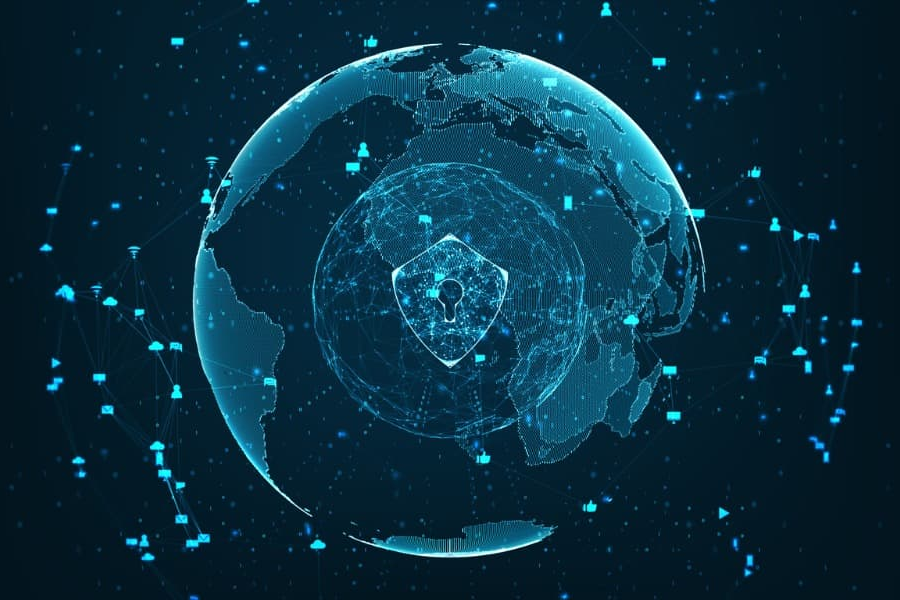The digital threat landscape is always evolving, but the security industry is keeping pace — and new security tech trends could be the answer to staying safe on the job. Hardware and software are proving pivotal to the future of the security industry, particularly as security and technology become even more permanently linked. More than 38 billion devices are forecast to be connected to the internet within the next four years, many of which will be dedicated solely to supporting the safety of individuals, businesses, events, and public buildings.
It has thus never been more vital to understand why defensive measures count and to stay current on what you can do to deploy them. This guide will spotlight the six most in-demand security technologies, how they’re taking the fight to crime, and why you should consider adding them to your tool kit.
Why Trending Security Technologies Matter
New security technology and upgrades to existing measures are more than simply trends. They are the first line of defense against criminals and vulnerabilities, representing both the cutting edge of the present and the first wave of the future.
The areas growing fastest today are augmenting measures you may already be aware of, such as video surveillance cameras, professional armed security, and cybersecurity. More pioneering sectors like hybrid cloud capabilities and edge computing are newer concepts destined to become security norms. The following three groups will enjoy a better-protected future when these emerging security technologies are fully adopted:
1. Private Individuals
Users of privately connected devices are vulnerable to security attacks that could decimate their systems, deplete their finances, or steal their identities. As greater security awareness slowly becomes the norm — coupled with cutting-edge safety tech — we will be able to prevent many of these personal crimes.
2. Businesses of Every Size
Business size makes no difference to digital criminals. They seek to exploit companies at every level. Everyone from the CEO to the intern is now better protected by modern security technology safeguards coupled with effective safety training.
3. Public Buildings
Schools and other public-access premises represent some of the most concerning safety risks. Modern security solutions protect these buildings and their visitors through an effective combination of physical and digital measures.
The interconnectedness of today’s digital world means that when one individual’s security is compromised, it can quickly become an issue for anyone in their network (be that private or professional). This makes it essential for every link in the chain to stay current on security trends and implement them wherever possible.
The 6 Leading Trends in Security Technology
The perimeter security model, which involves placing a great amount of trust in a firewall, is history. Individuals and organizations are demanding more from security technology and for it to reach deeper and respond faster than it ever has before. Those demands are reshaping the main safety focuses, including:
1. Cloud Advancement and Hybrid Protection
Responsiveness and redundancy are security technology’s best friends and worst enemies, respectively. The cloud-based security sector will grow significantly in the next few years as a result. Coupling the cloud with onsite hardware and software strengthens safety teams by keeping them current with upgrades and providing the ability to quickly scale operational security requirements to meet fluid situational demands.
2. Transparency as a Protective Tool
Customers now expect to know how their physical and digital security will be maintained across all contact points. They want to see every step in the process and scrutinize the safety policies not only of their primary contact but every associated link in the chain. Only security providers with the strictest standards in practice, transparency, and partner selection can hope to compete.
3. Artificial Intelligence
Artificial intelligence (AI) is proliferating at an exponential degree. Smart, multispectral video cameras are better at protecting property and limiting crowd incidents. Deep learning and machine learning are being applied to outsmart cyberhackers seeking to disable everything from door locks to drones. AI is key to another security technology further empowering humans and machines: The rapid response capabilities of edge computing.
4. 5G Will Provide a Big Security Boost
5G represents a quantum leap in data processing and the speed and integrity of communications. It is still in the process of becoming a norm, but it represents the future basis of all security technology for at least the next 10 years. Committed security professionals are already getting ahead of the curve and upgrading their operations to take full advantage of 5G when it is in place.
5. Staff Security Training
The pandemic has seen hundreds of thousands of employees transitioning to working from home. This remote aspect means that sensitive personal and professional data is handled on unprotected hardware by under-trained personnel and employment premises are understaffed. Demand is growing for organizations that can provide clear and actionable security training that will protect people, property, and data banks.
6. The Need for the Human Machine
Security technology is only as effective as the people who design it and the pros who deploy it. Human agents will always have the edge over algorithms for three reasons: Professional armed security does not go offline, they cannot be hacked, and they combine past experience with present awareness to make the best judgment calls based on the reality of the situation.
Modern security technology is slowly unifying hardware, software, cyberspace, and human vigilance. This combination is a perfect example of how tech safeguards must rely on other elements to be fully effective. Ignoring one will only weaken the performance of the other three.
The Common Risks of Handling Security Alone
The more backup you have, the better. No security tech is failsafe on its own, and security situations can get out of hand if you’re dealing with them alone. Here are just a few reasons why going solo on your safety may be unwise:
- Human error and limited environmental awareness are constant weak points in any safety situation. Failure to implement extra personnel and security technology like video surveillance, cameras, and analytics can leave you with dangerous blind spots.
- Attacks on your personal or professional security need evidence to back them up. You are almost certainly leaving yourself open to a lost case without corroborative witness testimony from security agents and visual proof like photographs and video.
- The rapidly advancing state of security technology is causing laws and legislation to evolve almost as quickly. Many methods, particularly drones, can land under-informed users in legal trouble if deployed with insufficient awareness of the rules.
- Compromised security scenarios can escalate fast. Even the best-prepared parties can succumb to pressure without practical in-field experience. Professional armed security guarantees a cool head in any situation.
The truth is that issues can arise when you tackle safety measures alone. The best way to cover every base is to work with a team who understands your unique safety requirements and makes security technology second nature.
Contact the SMART Team for Peace of Mind
The security technology of the future promises to keep users safer and criminals on their toes. Working with a security partner will make the difference between taking advantage of new developments or becoming a target. If you’re ready to make cutting-edge technologies like these a part of your security strategy, SMART Security Pros can help. Our highly trained team of security experts is available 24/7 to answer any questions you have about the state of security technology and how you can make your facility safer.
Contact SMART Security Pros to discuss your security needs.




















